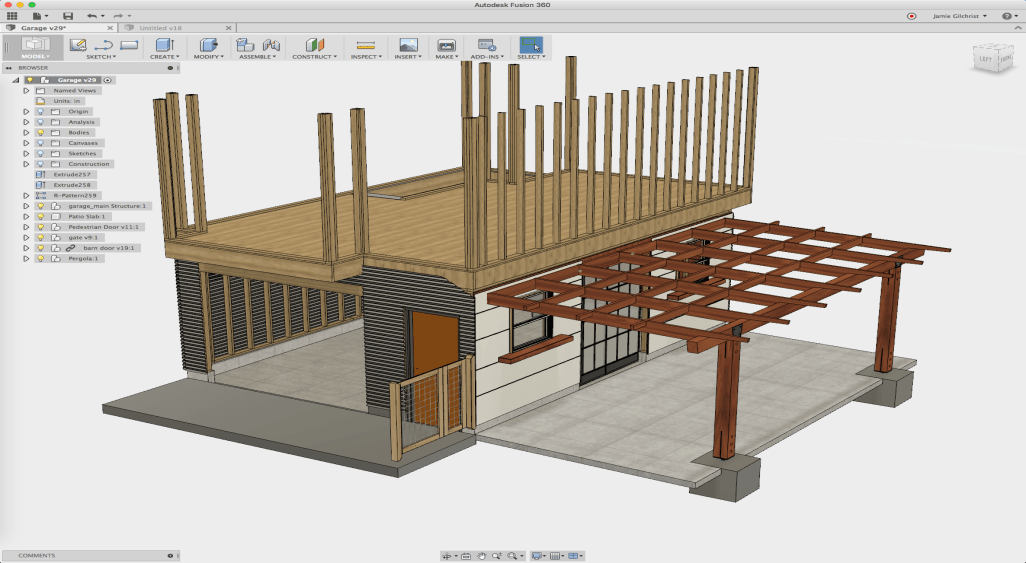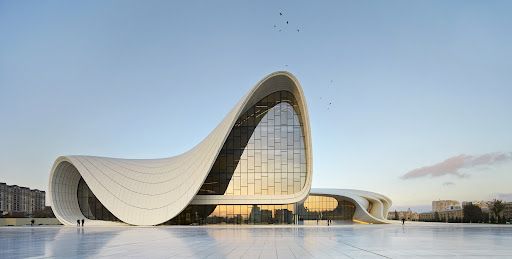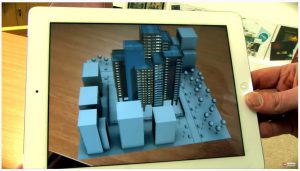
Design is an iterative process. It’s trial and error, and the journey between the first draft and the final masterpiece is tedious and time exhaustive. Generative and algorithmic design, such as Generative Design (GD), however, completely shifts this paradigm by taking this journey on behalf of the designer and producing many optimal alternative solutions in a matter of minutes.
As CAD tools and technologies evolve and become accessible to a larger audience, the way designers work will keep changing, and generative design is one revolutionary advancement.
Generative Design, Parametric, & Algorithmic Design
There doesn’t seem to be a consensus on the exact definition of these terms, and they seem to represent overlapping concepts. They have been used interchangeably across contemporary literature, further highlighting the definitional challenge. Before diving into the world of computational design, it helps to start with a sound taxonomy.
In summary
- Generative design is an iterative process that enables the testing of thousands of alternative solutions that meet certain criteria. It explicitly relies on algorithms and is, therefore, an algorithmic design, and where the algorithm depends on defined parameters, it is also a parametric design.
- Parametric design is an interactive process that allows real-time changes to a design through adjustable parameters.
- Algorithmic design is a design process based on algorithms and can be employed in both parametric and generative design scenarios.
Also explore article on Concept Architecture
Generative Design (GD)
Generative Design is an iterative process that uses AI technology and evolutionary algorithms to suggest a range of solutions that meet certain criteria. Krause (2003) defined it as the development of systems that can develop, evolve, or design architectural structures/objects more or less autonomously.
It creates hundreds or thousands of alternative designs tests them against given metrics after every iteration and converges on the most optimal solutions. This generation process involves continually adjusting parameters that define the optimum model, though this is done rapidly and automatically.
Changing one parameter of a design usually impacts countless other parameters, resulting in a cascade of adjustments. A designer’s ability to identify and remember all the parameters is limited, but the computer can even surprise a designer with parameters they had not even considered. As such, generative design is not only a tool to explore solutions, but can also help open up a designer’s mind and creativity.
Parametric Design
Many authors have attempted to define the parametric design. Moretti (1971) called it the study of “the relationships between the dimensions” of a design based on parameters. Elghandour et al. (2014) defined it as a code-based design approach that facilitates the generation of several design instances without manually recreating the models.
In a recent literature review, Caetano et al. (2020) sought to aggregate views from many authors into one concise definition. They say that “PD is an approach that describes a design symbolically based on the use of parameters”.
Seeing that today parametric design is deeply married to BIM, perhaps the contemporary reader would expect to see “that parametric design is a computational representation of geometric relationships that are “automatically updated and visualized on the screen” upon parameter change”, as Kelly (2009) summarized it.
Algorithmic Design
Different authors have variably classified algorithmic design as part of the generative design or parametric design. Bukhari (2011) purports that the former includes the latter. Going back to the work of Caetano et al. (2020), they considered algorithmic design as a paradigm that uses algorithms to generate models and, therefore, deemed it to also be generative.
Generative design – the old and the new
The current wave of excitement about generative design is being driven by advances in artificial intelligence and computing power, but the concept of generative design is decades old. Pioneers of algorithmic art were already using this technology in the 1960s and 1970s. Manfred Mohr, a digital artist, created variations of 3D geometry using generative design as early as the 1960s.
Generative design has applications in almost every industry. NASA recently used this technology to generate configurations for its satellite antennas, as reported by Jason Lohn, the project’s leader of this project at NASA Ames Research Center, in a feature article published by the agency in 2006.
Also learn about AI Floor Plan Generators
Generative design in architecture
Basically, the goal of generative design is to help designers quickly explore optimum solutions and make informed decisions in complex design problems. It is automation technology.
The design problem
Imagine that an architect is designing a serviced apartment that features a common living area to maximize space. Knowing that millennials and the x-generation, the target market, spend more time in their bedrooms than in the kitchen and love to socialize, they go for an open floor plan. The designer needs to decide a few things.
- How big will each room be?
- How many bathrooms can the apartment fit?
- Which is the optimal arrangement of the rooms?
The Constraints
Every design project is constrained by various parameters. For the residential serviced apartment project, the constraints may include:
- The plot size,
- The minimum space for each room,
- Location of windows and the main entrance
- Minimum number of bathrooms
- Orientation: lighting and circulation
- Structure of the building
- Plumbing
Applying generative design
The designer enters these constraints into CAD software with generative design, and the computer tries numerous alternative floor plans that meet those constraints. The software continually makes the outcome better and better, until it converges on the designs that maximize the space most effectively.
This happens in a matter of minutes and produces as many possible solutions as needed. Even if the designer sits all night for days, there is a limit to the number of possible designs they can produce.
Sounds too futuristically good to be true? It’s not. Generative design is available with most of the existing CAD tools such as AutoDesk Revit and is actively being used in countless projects across multiple industries.
Benefits of generative design
Many complex real-world structures have been successfully designed with generative design technology.
One of the most iconic success stories of generative design in architecture is an office and research space design project by AutoDesk the MaRS Innovation District of Toronto.
“We pushed the limits of generative design for architecture. We started with high-level goals and constraints, collecting data from employees and managers about work styles and location preferences”, AutoDesk writes in their ebook.
After developing their design goals, such as interconnectivity, work style preference, adjacency preference, daylight, views of the outside etc, they created a geometric system with multiple configurations of work neighbourhoods, amenities, circulation, and private offices.
“We then used the power of cloud-based computation to generate, evaluate, and evolve 10,000 different design options to arrive at the final, optimized design for our new office”, the ebook continues. 
Image Source
AutoDesk reports the following benefits of generative design for their project:
- Managing complexity
- Optimizing for specific criteria
- Augmenting human creativity and intuition
- Incorporating input from past projects and current requests
- Navigating trade-offs based on real data
- Structuring discussion among stakeholders about design features and project objectives
- Offering transparency about project assumptions and offering a “live model” for post-occupancy monitoring and restacking
- Discovering unanticipated design solutions
Below is The Heydar Aliyev Centre, a masterpiece in the heart of Azerbaijan’s capital, which was designed by the late Zaha Hadid, a renowned architect.
Image Source
The breathtaking and nearly impossible curvy architecture accommodates a museum, a library, and a conference hall, and demonstrates the power of generative design.
Generative design process
Before starting with generative design, it helps to understand the generative design process. AutoDesk identifies the following six stages of the generative design workflow:
Stage 1. Generate
The system generates design options using algorithms and parameters specified by the designer.
Stage 2. Analyze
These designs are then analyzed on how effectively they meet the designer’s goals.
Stage 3. Rank
Results of the analysis are used to order and rank design options.
Stage 4. Evolve
The rankings are then used to figure out how to evolve or develop the designs further.
Stage 5. Explore
It’s time to compare and explore the generated designs as per their original specifications and criteria.
Stage 6. Integrate
The designer chooses the optimal design and integrates this design into the project.
Get started with generative design
Generative design works on top of CAD software and integrates other technologies such as Building Information Modeling. It involves writing or using pre-made scripts to automate the design exploration process. The following section describes how to get with a generative design using AutoDesk.
Scripting
In computer programming, a script is a section of a program. Scripting, therefore, is the activity of writing a script that performs a certain action, such as automating a certain process. Python is the most popular programming language in use, mostly because of its readability and short learning curve.
With or without some coding experience, it’s relatively easy to get started, especially with easy-to-use tools such as the Dynamo Player discussed below.
Tools and platforms
Autodesk’s Fusion 360 is the most popular platform for generative design. On the product’s overview page, it is described as a cloud-based 3D modeling, CAD, CAM, CAE, and PCB software platform for product design and manufacturing.
To use the platform, you need a license as explained here. Fusion 360 includes a trial license that can be used to get one’s feet wet. Once access has been granted, it’s as simple as opening a model, say in AutoDesk Revit, and then choosing a script to run or “play” in the Dynamo Player, and it executes instructions in the script.
Tools for architecture design
Below is a list of tools that can be used for architecture design.
- Testft – Algorithmic / Parametric
- DBF – Parametric
- Grasshopper in Rihno – Parametric
Learn more about NFTs and Architecture in Metaverse
Conclusion
Generative and algorithmic design will change the way architects work, reaching more designers with its capabilities. However, this technology remains a tool that generates optimal solutions, with the ultimate decision resting with the designer.
With proper adoption, architecture design workflows will shorten. Complex designs will transition from being mere concepts to efficient, environmentally-friendly real-life structures, highlighting the transformative power of generative and algorithmic design.
What’s Next?
Generative Design is a cutting-edge technology that is now reaching more designers. Did we miss out on anything? We would love to hear from you! Let us know in the comment section below.
Also visit our blog page to delve into some interesting articles.






